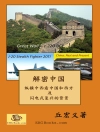Since its early days of mass production in the 1850s, the sewing machine has been intricately connected with the global development of capitalism. Andrew Gordon traces the machine’s remarkable journey into and throughout Japan, where it not only transformed manners of dress, but also helped change patterns of daily life, class structure, and the role of women. As he explores the selling, buying, and use of the sewing machine in the early to mid-twentieth century, Gordon finds that its history is a lens through which we can examine the modern transformation of daily life in Japan. Both as a tool of production and as an object of consumer desire, the sewing machine is entwined with the emergence and ascendance of the middle class, of the female consumer, and of the professional home manager as defining elements of Japanese modernity.
Mục lục
List of Illustrations
Preface
Introduction
Part One: Singer in Japan
1. Meiji Machines
2. The American Way of Selling
3. Selling and Consuming Modern Life
4. Resisting Yankee Capitalism
Part Two: Sewing Modernity in War and Peace
5. War Machines at Home
6. Mechanical Phoenix
7. A Nation of Dressmakers
Conclusion
Appendix: Some Notes on Time-Use Studies
Notes
Select Bibliography
Index
Giới thiệu về tác giả
Andrew Gordon is Lee and Juliet Folger Fund Professor of History at Harvard University. His previous books include Labor and Imperial Democracy in Japan (UC Press) and A Modern History of Japan.












